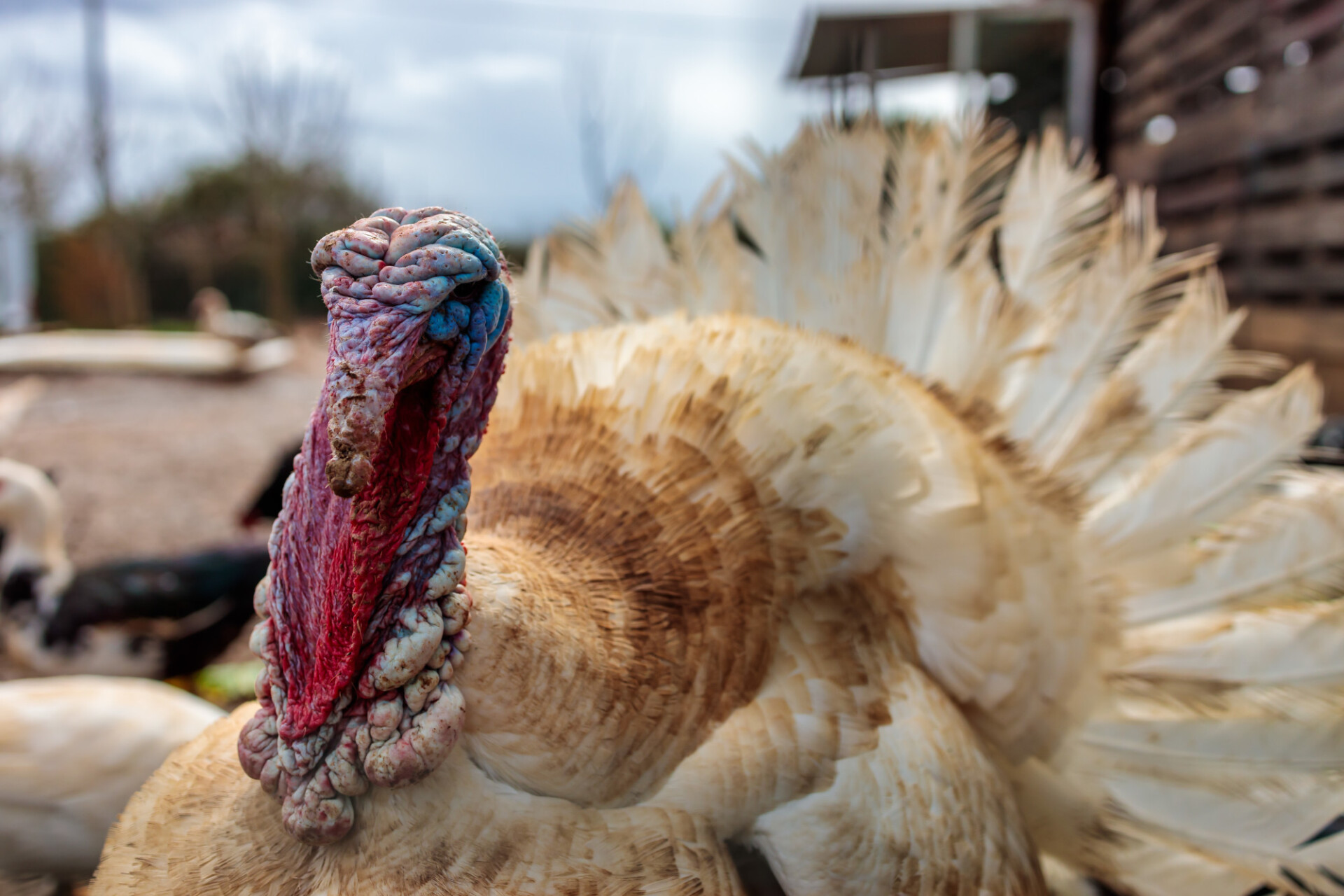Through autumn and the beginning of winter, more and more people start to think about Christmas. Where are we eating? Who are we eating with? And most importantly, what christmas turkey are we eating? Many aren’t aware that there are two main types of turkey: bronze and white. But what is the difference? Here, we’ll discuss everything you need to know about the difference in turkeys and which you should buy for your festive celebrations.
With its bright white plumage the White turkey is one of the most recognizable domestic turkey breeds. It has become the predominant commercial breed used in mass poultry production. But what exactly is a White turkey and why has it become so ubiquitous?
Origins of the White Turkey
-
White turkeys originated by selectively breeding white-colored mutants of the Bronze turkey breed This took place after turkeys were brought from Mexico to Europe in the 16th century
-
Farmers favored the white birds because their feathers showed less dirt during processing compared to darker birds. This made them easier to pluck and prepare.
-
White turkeys were first imported to America in the late 19th century and became widespread in commercial farming by the 1930s.
Development of the Broad Breasted White
-
Through specialized breeding programs, the Broad Breasted White turkey was developed from the White Holland breed in the 1950s.
-
It was designed for maximum meat production, with a heavier, broader breast and the ability to gain weight rapidly.
-
This intensive selection has made the Broad Breasted White the predominant commercial turkey breed today, accounting for over 99% of turkeys raised.
Traits of White Turkeys
-
White turkeys are characterized by their bright, snowy white plumage and pinkish-white skin. Legs are reddish-pink.
-
Compared to heritage breeds, White turkeys grow very fast and large with males averaging 40+ lbs. and hens around 20 lbs.
-
Their breast meat yield is excellent. However, their body frame is too heavy to sustain flight.
-
Temperament is generally docile and calm. However, leg and heart problems may result from their extreme size.
Uses for White Turkey
-
Meat production is the primary use of White turkeys, efficiently producing higher yields of breast meat.
-
Almost all whole frozen and processed turkeys come from the white Broad Breasted breed.
-
While White turkeys can lay eggs, their high hatchability makes eggs rare. Fertile eggs may be used for hatching more commercial poults.
-
Due to their calm disposition, white turkeys may be kept as pets or exhibition birds by some enthusiasts.
Controversy Around White Turkey Breeding
-
Critics argue that modern White turkeys have been over-specialized for commercial objectives at the cost of flavor and sustainability.
-
Narrow breeding has reduced genetic diversity, resulting in health and welfare issues. Reliance on artificial insemination to reproduce is often cited.
-
In contrast, supporters see the White turkey success story as a result of efficient, large-scale food production to meet consumer demand.

Choosing Bronze or White Turkey for Christmas
The breed of turkey you choose for Christmas or thanksgiving is completely dependent on your preference. White turkeys are great for catering to white and dark meat lovers as they are slightly more cost-effective. If the richer taste of the bronze turkey is calling your name, then you won’t be disappointed in the beautiful taste and texture. However, the difference in taste is more pronounced in brown meat, so if you’re only going to eat white meat, white turkey may be your best option.
We have a range of turkey that is sure to make you and your guests happy this festive period. From turkey crowns to full turkeys, we’ve got you covered!
What is the difference between Bronze Turkeys and White Turkeys?
Bronze turkeys are more closely related to the wild turkeys found in native America in both appearance and taste, and we match their native growing environment as closely as possible so that they grow perfectly. They have an unusual colour which is often black and metallic in the sunlight giving them a bronze tone.
White turkeys have wider breasts and have only white feathers. They are typically reared in a barn, however, we raise all our turkeys’ completely free range.
HFG Farm Animal Spotlight: Broad Breasted White Turkey *TURKEY WEEK*
FAQ
What kind of turkey is a white turkey?
The White Holland turkey is showy in appearance, with snow-white feathers and a red to bluish head. The beard is black, the beak is pink to horn colored and the throat and wattles are pinkish-white.
Are White turkeys good to eat?
White turkeys are succulent with a more subtle taste and are the go-to turkey for most. They’re also great for those who enjoy a healthy piece of breast meat whilst also providing generous thighs and wings to cater for those who prefer dark meat.
What is the difference between a white turkey and a brown turkey?
- Flavor: White turkeys have a milder, more neutral flavor, and are a popular choice for those who prefer a tender, juicy turkey.
- Meat: White turkeys have lighter and leaner meat, particularly in the breast.
- Breed: The White Holland is a rare heritage breed of white turkey that originated in Mexico.
How rare is it to see a white turkey?
Albino wild turkeys are extremely rare, and leucistic wild turkeys are nearly as rare – only a handful are harvested each year out of nearly 750,000 nationwide.
